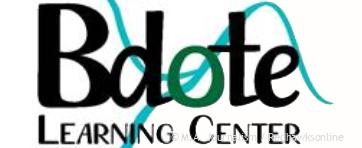“You can’t separate language and culture,” said Program Director Louise Matson of the Division of Indian Work (DIW), a branch of the Greater Minneapolis Council of Churches.
The loss of native language has been an increasingly difficult issue among Native American communities.
“When we’re losing our language, we’re losing our culture,” said Matson. “We’re losing our ceremonies and we’re losing meanings that we can’t translate into english, that can’t really be explained in English. That’s a scary thought.”
As an essential part of their culture, language provides a sense of community and preservation of tradition. In order to stop native languages from disappearing, many language revitalization programs such as Our Mother Tongues, a national program originated in Connecticut, have begun to work with Native communities to provide the resources for younger populations to learn and use their language. More general initiatives such as the online Endangered Languages project work to protect many of the world’s at risk languages through shared language documentation.
However, documentation of language through technology isn’t considered the best option for Native American languages. While videos of those speaking the language can capture “intonations, dialect differences [and] pronunciation,” Executive Director Sonja Moore of the Grotto foundation located in Arden Hills, which supports Native language through their funding initiative, states that technology cannot “supplant having a good group of fluent speakers.”
“We’ve been funding Native language revitalization for about 15 years,” said Moore, “and it’s become apparent that it’s a very long term project because so many of the speakers are not around anymore. It’s hard to find what we would call first speakers, people who grew up speaking the indigenous language.”
Knowing this difficulty, many communities have taken steps to counteract loss.
“A variety of organizations and schools are really striving to teach those languages to both young children,” said Moore, “and also [to] teachers who have been in language programs for a long time but are still seeking a higher level of fluency so that they can go back to teach the kids at a fluent level.”
These programs have found that teaching children their native languages protects their culture.
“There’s a lot at stake because languages are very much tied to indigenous knowledge, to Native American philosophy, to explaining their life ways and belief systems,” said Moore. “We’ve noticed that immersion programs are a stronger way to get kids fluent faster and so there are quite a few programs now that are working towards that end.”
Some programs working towards that end are immersion schools like the Bdote program in Minneapolis which Matson participates with as a part of the school board.
“There are not a lot of opportunities for the kids to speak their language and to speak it that much,” said Matson. “It’s proven that academic rigor and culture and language are successful with native students. It’s a combination of both. You can’t have one without the other.”
Immersion programs such as those being implemented now are an experience that Lakota native Dawson Her Many Horses wishes he could’ve taken part in.
“I don’t speak the language,” said Her Many Horses. “When you’re younger it’s a lot easier to learn. I wish they had [immersion programs] when I was younger. We grew up learning Spanish and German. That’s what was offered.”
These limited options and the fading of language has put anxiety into the hearts of many natives.
“If people aren’t learning it at the rate that people are passing,” said Her Many Horses, “thats a big issue.”
The dying of natives languages begs the question of how they connect to other lost languages such as Latin.
“On the basic level, it’s a pretty similar situation in that the political situation has dictated that the language change,” said Beck. “But with Latin, although it’s technically dead, you see its remnants in a lot of other languages like the Romance languages and its still being used in its church form and by the Vatican.”
And while Latin has remained present despite being phased out, Native American language may not have the same lasting impression due to the actions of conquerors.
“It’s to erase their past, its to erase the memory of the fact that they were once something and now they’re conquered,” said American history teacher Elizabeth Van Pilsum. “It’s part of the conquering nature to get rid of [native language].”
Along with losing identity comes loss of spirit.
“Historically, languages of minority populations have and do die out and sometimes that’s the natural progression of things,” said Van Pilsum, “For Native Americans specifically, I think it’s another blow to their self-esteem and crushing to their spirit. When they took kids from reservations, they put them in boarding schools. They had to cut their hair, they couldn’t speak the language. The good news is its starting to be very popular to learn these languages and take pride in them.”
Taking pride in native language and culture has already proven to be a positive force in their society.
“It’s one of the most important things in building pride and self-esteem, which leads to opportunity,” said Van Pilsum. “The Dakota people are officially still exiled from the state of Minnesota; it’s on the law books that they are not allowed in Minnesota since the Dakota uprising with Little Crow in 1862. And so the young people today who have learned their language and feel pride are fighting to get that law off the books. It’s empowering to know your language and to have pride in it because then you want to make positive changes.”
And these positive changes can apply both native society and society as a whole.
“If you can have that people graduate high school with the skills and the ability to determine their own future,” said Matson, “you’re going to have a better, healthier community. We will do better as a whole community, regardless of where native people are.”

